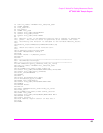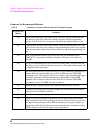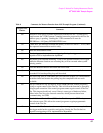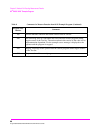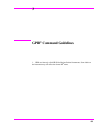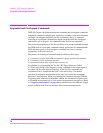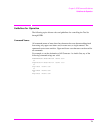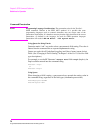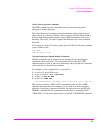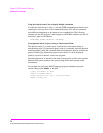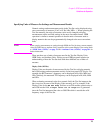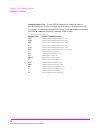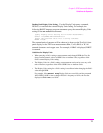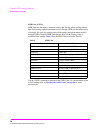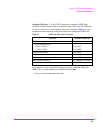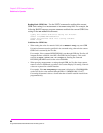
73
Chapter 3, GPIB Command Guidelines
Guidelines for Operation
Using Colons to Separate Commands
The GPIB command syntax is structured using a control hierarchy that is
analogous to manual operation.
The control hierarchy for making a manual instrument setting using the front-
panel controls is as follows: first the screen is accessed, then the desired field is
selected, then the appropriate setting is made. GPIB commands use the same
hierarchy. The colon (:) is used to separate the different levels of the command
hierarchy.
For example, to set the AF Analyzer input gain to 40 dB, the following command
syntax would be used:
DISP AFAN
AFAN:INP:GAIN ’40 dB’
Using the Semicolon to Output Multiple Commands
Multiple commands can be output from one program line by separating the
commands with a semicolon (;). The semicolon tells the Test Set’s GPIB
command parser to back up one level of hierarchy and accept the next command
at the same level as the previous command.
For example, on one command line, it is possible to
1. access the AF ANALYZER screen,
2. set the AF Analyzer’s Input to AM Demod
3. set Filter 1 to 300 Hz HPF
4. set Filter 2 to 3kHz LPF
DISP AFAN;AFAN:INP ’AM DEMOD’;FILT1 ’300Hz HPF’;FILT2 ’3kHz LPF’
The semicolon after the “DISP AFAN” command tells the Test Set’s GPIB
command parser that the next command is at the same level in the command
hierarchy as the display command. Similarly, the semicolon after the INP 'AM
DEMOD' command tells the command parser that the next command (FILT1
'300Hz HPF') is at the same command level as the INP 'AM DEMOD' command.



